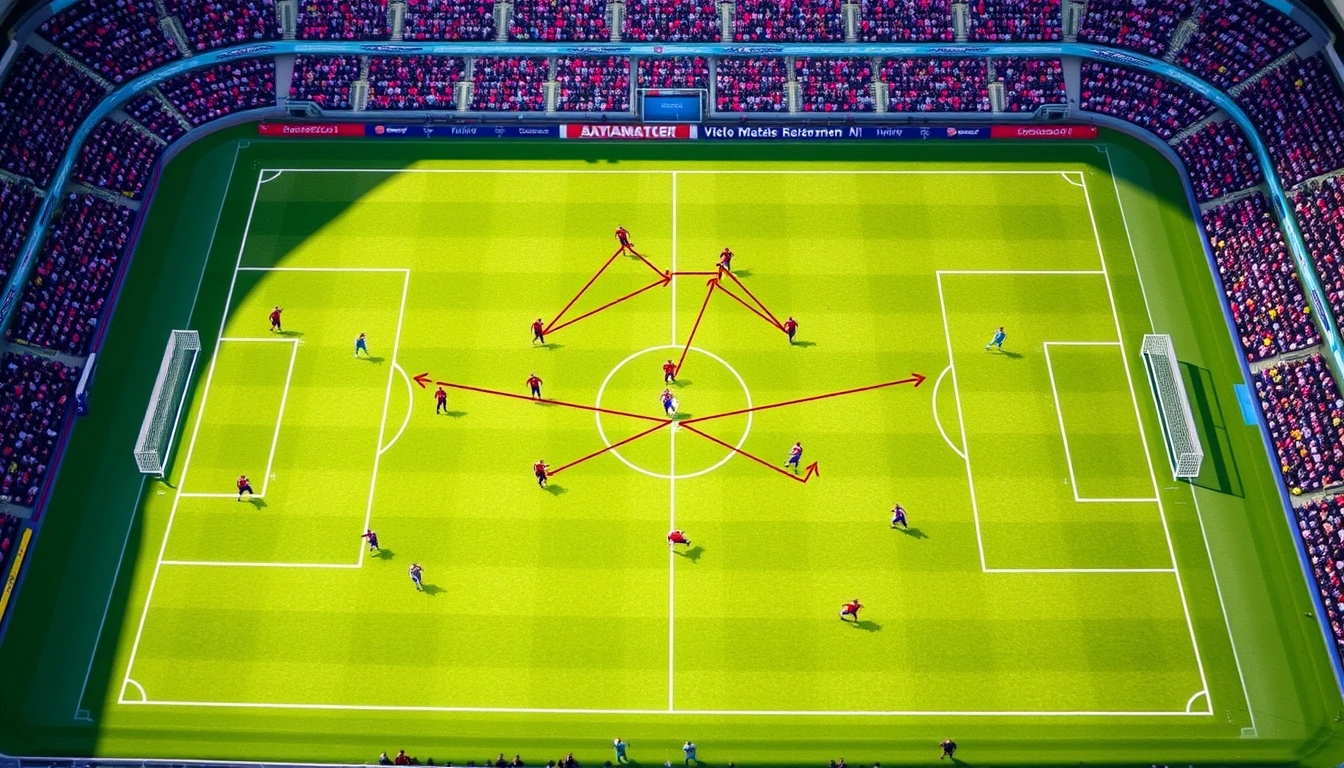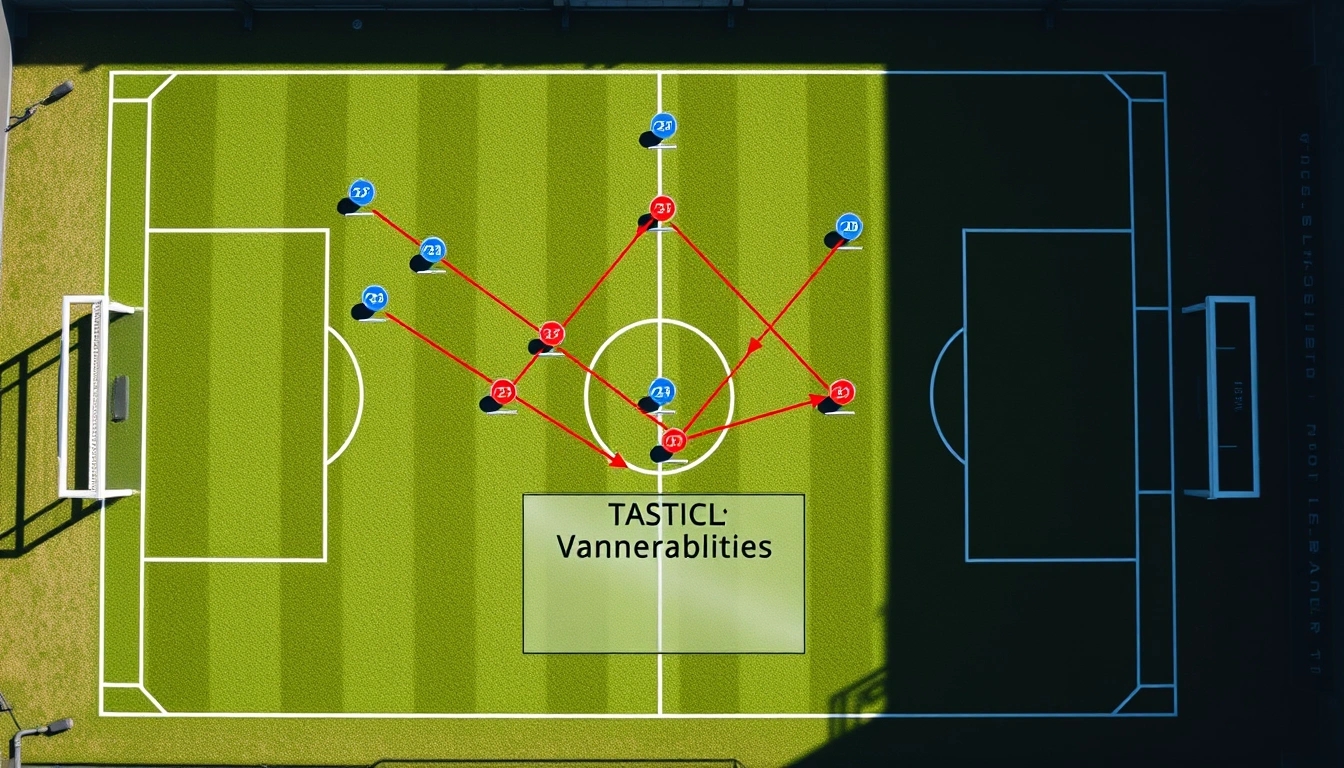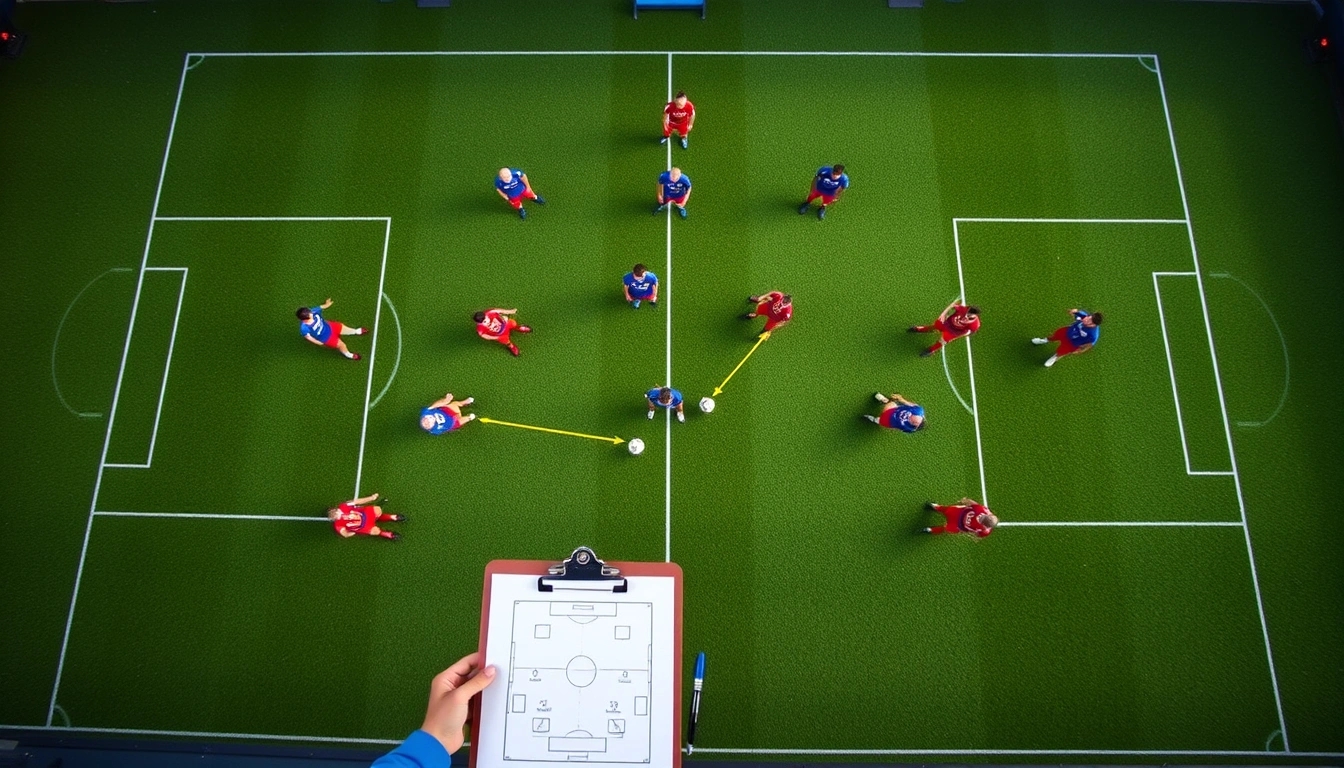Alright, so you’ve probably heard the buzz about the 4-2-3-1 formation floating around football chatter. It’s one of those setups that managers swear by, but what’s all the fuss really about? Let’s peel back the layers and get to the nitty-gritty. This formation is like a Swiss Army knife — versatile, reliable, and kinda sneaky in how it balances defense and attack. It’s got four defenders at the back, two midfielders sitting deep (the “double pivot”), three attacking midfielders buzzing behind a lone striker up front. Sounds simple, right? But don’t be fooled, there’s a lot going on under the hood.
- Structure: Four defenders hold the fort, two midfielders protect the defense and control the game’s rhythm, three creatives link up play, and one striker tries to finish the job.
- Strengths: Flexibility to switch gears mid-match, solid defensive cover, and a potent attack with three players feeding the striker.
- Weaknesses: Sometimes leaves the lone striker isolated, and if the double pivot isn’t on point, the defense can get exposed.
| Position | Role | Key Attributes |
|---|---|---|
| Defenders (4) | Defend, build from back | Positioning, tackling, passing |
| Holding Midfielders (2) | Shield defense, dictate tempo | Stamina, vision, tackling |
| Attacking Midfielders (3) | Create chances, support striker | Creativity, dribbling, passing |
| Striker (1) | Score goals, hold up ball | Finishing, strength, movement |
Now, the beauty of the double pivot can’t be overstated. These two midfielders are the unsung heroes, breaking up attacks and launching counterattacks. If they’re lazy or out of sync, you’ll see the back four scrambling like headless chickens. Meanwhile, the trio behind the striker? Absolute chaos creators. They’re the ones twisting defenses in knots, slipping through tight spaces, and making magic happen. But hey, if they’re off their game, the lone striker can end up looking like he’s playing hide and seek all match.
The lone striker role is a beast on its own. You gotta be strong, smart, and selfish enough to take your chances but selfless enough to link up play. Not everyone can handle that pressure, which is why some managers tweak this formation mid-game, sometimes shifting to a 4-3-3 or 4-4-2 to give the striker some backup.
Why do managers love it? Because it’s adaptable. You can be defensive, attacking, or somewhere in between without changing the shape too much. It’s like having a formation that can wear many hats. But remember, no system is flawless. Opponents often target the space between the double pivot and the defense or overload the flanks to exploit the wide midfielders’ defensive duties.
So, if you’re coaching or just a curious fan, the 4-2-3-1 offers a balanced, dynamic approach that mixes grit with flair. It’s no wonder it’s a global favorite. Just don’t expect it to win games on its own — it needs the right players, the right mindset, and a bit of luck.
What Is the 4-2-3-1 Formation?
If you’ve ever tuned into a football match and wondered why so many teams seem to line up in a shape that looks like a fancy number puzzle, you’re not alone. The 4-2-3-1 formation is one of the most popular setups in modern football, and it’s not just for show. It’s a clever blend of defense and attack that managers swear by, offering a bit of everything: solidity at the back, midfield control, and plenty of attacking flair. But what exactly does it mean? Let’s break it down.
Picture this: four defenders form the backbone of the team’s defense — two center-backs and two full-backs — providing the last line before the goalkeeper. In front of them, two midfielders act as a “double pivot,” the unsung heroes who do the dirty work, breaking up opposition plays and launching attacks. These two are like the team’s heartbeat, controlling tempo and keeping things ticking.
Then comes the creative core — three attacking midfielders stationed just behind the lone striker. This trio is the engine room of offense, tasked with threading passes, dribbling past defenders, and generally causing chaos in the opponent’s half. They’re the ones who make the magic happen, combining skill, vision, and a bit of cheekiness to unlock tight defenses.
Finally, there’s the single striker, often the focal point of the attack. This player shoulders a lot of responsibility — holding up the ball, finishing chances, and sometimes dropping deeper to link play. It’s a lonely job, but when done right, it can be devastating.
| Position | Primary Responsibilities | Key Attributes |
|---|---|---|
| 4 Defenders (2 CB + 2 FB) | Defend, mark attackers, support wing play | Positioning, tackling, stamina |
| 2 Holding Midfielders | Shield defense, control tempo, distribute ball | Awareness, passing, stamina |
| 3 Attacking Midfielders | Create chances, assist striker, press opposition | Creativity, dribbling, vision |
| 1 Striker | Score goals, hold up ball, link play | Finishing, strength, positioning |
Now, here’s the thing — the beauty of the 4-2-3-1 is its flexibility. It’s like a Swiss Army knife for coaches. The two holding midfielders can switch between a more defensive or creative role depending on the game situation. The attacking trio can morph their positions, sometimes shifting wide or squeezing inside to overload certain areas. And the lone striker? Well, sometimes they’re a poacher, sometimes a target man, and sometimes a false nine sneaking into midfield.
- Strengths: Balanced defense and attack, midfield control, tactical flexibility.
- Weaknesses: Can leave the lone striker isolated, requires disciplined midfielders.
- Why managers love it: Offers a solid base while allowing creative freedom upfront.
In short, the 4-2-3-1 isn’t just a formation; it’s a philosophy. It’s about balance, control, and making sure the team can adapt on the fly. Whether you’re a manager plotting a masterstroke or a fan trying to understand what’s going on, knowing the roles and layout of this formation gives you a front-row seat to the tactical chess match that is football.
So next time you see that neat diamond shape on the pitch, you’ll know there’s a lot more going on than meets the eye — a well-oiled machine built to keep opponents guessing and fans on the edge of their seats.
Defensive Backbone: The Double Pivot
When you think about the 4-2-3-1 formation, the spotlight often shines on the flashy attackers or the lone striker banging in goals. But let’s not forget the unsung heroes sitting just in front of the backline — the two holding midfielders, aka the double pivot. These guys are the real engine room, the shield that keeps the defense safe and the tempo of the game ticking along smoothly. Without them, the whole formation risks looking like a house of cards.
So, what exactly do these two midfielders do? First off, they act as the primary protection for the back four. Think of them as the bodyguards who never let attackers stroll into dangerous areas too easily. They break up opposition plays, intercept passes, and win tackles — basically, they’re the defensive firewall. But it’s not just about brute force. These midfielders also dictate the rhythm of the team’s play from deep positions. They decide when to speed things up, when to slow it down, and where the ball should go next. It’s a delicate balance between defense and playmaking, and not every player can pull it off.
- Defensive Duties: Shielding the backline, intercepting passes, and disrupting opponents’ attacks.
- Playmaking Role: Controlling the tempo, distributing the ball accurately, and linking defense to attack.
- Positioning: Staying disciplined, covering spaces, and providing passing options under pressure.
| Key Attributes of a Holding Midfielder | Why It Matters |
|---|---|
| Stamina | Constantly moving, covering ground, and maintaining intensity |
| Passing Accuracy | Ensures smooth transitions and effective ball distribution |
| Defensive Awareness | Anticipates opponent moves and cuts off attacks early |
| Physicality | Wins duels, holds off opponents, and protects teammates |
Now, here’s the kicker — having two holding midfielders isn’t just about doubling the defense. It’s about balance. One might sit slightly deeper, acting as the anchor, while the other can have a bit more freedom to step forward and join the attack. This dynamic duo has to communicate like best mates, constantly adjusting their positions depending on the flow of the game. If one gets caught out of position, it can leave the defense exposed, and that’s when the opposition smells blood.
And let’s be honest, not every team nails this double pivot business. Sometimes, managers pick the wrong players who either sit too deep and kill the tempo or get too adventurous and leave gaps behind. It’s a tricky role that demands brains, brawn, and a bit of footballing artistry. When done right, though, it’s like having a metronome and a fortress rolled into one.
In short, the double pivot is the heartbeat of the 4-2-3-1 formation. Without these two midfield maestros, the team loses its defensive solidity and creative spark from deep. So next time you watch a game, pay close attention to those two midfielders quietly doing their thing — they might not get the glory, but they sure as hell deserve the credit.

The Magic Trio Behind the Striker
When you look at the 4-2-3-1 formation, the spotlight often shines on the lone striker, but honestly, the real wizards are those three attacking midfielders right behind him. These three players are like the engine room of creativity, the ones stirring up trouble for the opposition defense and making sure the striker isn’t left twiddling his thumbs. Their job? Create chances, support the striker, and confuse the defenders—sounds simple, but pulling it off is an art and a bit of a headache for opponents.
First off, these three midfielders usually consist of a central attacking midfielder flanked by two wingers or wide attacking mids. The central player is often the playmaker, the one with the vision and passing range to unlock defenses. He’s the guy threading those killer through balls, picking out runs, and sometimes sneaking into the box to finish off moves. Meanwhile, the wide players bring pace, width, and unpredictability. They stretch the defense horizontally, dragging fullbacks out of position and opening gaps for the striker or the central midfielder to exploit.
| Role | Main Responsibilities | Key Attributes |
|---|---|---|
| Central Attacking Midfielder | Playmaker, chance creator, link between midfield and attack | Vision, passing, creativity, spatial awareness |
| Left/Right Attacking Midfielder (Wingers) | Stretch defense, deliver crosses, cut inside for shots | Pace, dribbling, crossing, shooting |
Now, here’s where it gets interesting. These three don’t just stick to rigid positions. Nah, they’re constantly moving, swapping places, and pulling defenders out of shape. One minute the right winger is hugging the touchline, the next he’s drifting inside to overload the midfield. The central attacking mid might drop deeper to collect the ball, dragging a defensive midfielder out of position and creating space behind. This fluidity creates all sorts of headaches for defenders who like their shape neat and tidy.
- Creating Overloads: By combining quick one-twos and clever off-the-ball runs, they outnumber defenders in key areas.
- Decoy Runs: Sometimes one attacker makes a run just to drag a defender away, opening space for the others.
- Quick Interchanges: Short, sharp passes to break defensive lines and exploit gaps.
Supporting the striker is another critical part of their job. These midfielders aren’t just creators; they’re also goal threats themselves. They arrive late into the box, latch onto rebounds, or unleash long-range shots when the opportunity arises. This dual threat means defenders can’t just focus on the striker—they have to keep an eye on the midfield runners too, which often leads to defensive confusion and mistakes.
To sum it up, the trio behind the striker in the 4-2-3-1 formation is like a well-oiled machine—each part doing its bit to create chaos, carve open defenses, and supply the striker with golden chances. Without them, the lone forward would be isolated and starved of service. So next time you watch a team lining up in 4-2-3-1, pay close attention to this magic trio—they’re the real game-changers.
The Lone Striker’s Job
When you think about the 4-2-3-1 formation, the spotlight often falls on that one single forward leading the attack. It’s a role that’s as thrilling as it is demanding, almost like being the lead actor in a play where the entire team’s performance hinges on your moves. But don’t be fooled—this striker isn’t just there to score goals; they’ve got a whole bunch of responsibilities that can make or break the team’s offensive flow.
First off, the lone striker is the focal point of the attack. They’re expected to hold the ball up, bring others into play, and create chances not just for themselves but for the trio of attacking midfielders lurking just behind. This means strong physical presence is a must—imagine being a wall that defenders constantly slam into while trying to wrestle the ball loose. It’s a tough gig! And if the striker can’t hold the ball up well, the whole team’s rhythm can get disrupted, leaving midfielders scrambling to adjust.
| Key Responsibilities | Challenges |
|---|---|
| Hold-up play and ball retention | Facing physical defenders and double-marking |
| Finishing chances clinically | Pressure to convert limited opportunities |
| Making intelligent runs behind defense | Timing runs to avoid offsides and losing possession |
| Linking with midfield and wingers | Maintaining chemistry with creative players |
| Pressing defenders when out of possession | Balancing energy and positioning |
Now, let’s talk about the mental side of things. Being the only striker means you’re constantly under the microscope. Miss a sitter? The crowd (and sometimes your own teammates) will let you know. But hey, that’s part of the game. This role demands resilience and a bit of that “never say die” attitude. Plus, the striker’s gotta be smart—knowing when to drop deep, when to dart forward, and when to just hold their position can be the difference between a goal or a wasted attack.
- Physicality: It’s not just about strength but also stamina. The striker needs to battle defenders for 90 minutes.
- Technical Skills: First touch, finishing, and passing under pressure are non-negotiable.
- Game Intelligence: Reading the game, anticipating defenders’ moves, and exploiting spaces.
One thing that often gets overlooked is the striker’s role in defensive duties. In modern football, forwards can’t just lounge around waiting for the ball. They’re expected to press high, disrupt the opponent’s build-up, and sometimes even track back. This adds another layer of complexity to the position—energy management becomes crucial.
In short, the lone striker in a 4-2-3-1 isn’t just a goal scorer but a multi-faceted player juggling physical battles, creative link-up play, and defensive work. It’s a tough gig that requires a blend of skill, grit, and smarts. So next time you see a striker leading the line, remember—they’re doing a heck of a lot more than just chasing the ball into the net.
Strengths of the 4-2-3-1 Formation
When it comes to formations that make coaches smile, the 4-2-3-1 often tops the list. Why? Well, it’s like that reliable friend who’s good at everything — balanced, flexible, and ready to roll with whatever the match throws at you. This setup blends defensive solidity with attacking creativity in a way that few formations manage to pull off without looking awkward or overexposed. Let’s unpack why this formation is such a darling in the tactical world.
First off, the balance is a huge selling point. With four defenders at the back, two holding midfielders in front of them, three attacking midfielders, and a lone striker, the structure covers the pitch like a well-oiled machine. The two holding mids act as a shield, breaking up attacks and recycling possession, while the three behind the striker provide flair, vision, and unpredictability. This means your team isn’t just sitting back hoping to defend — it’s always ready to counterattack or dominate possession.
| Key Strength | Why It Matters |
|---|---|
| Defensive Solidity | The double pivot protects the backline, making it tough for opponents to break through centrally. |
| Attacking Flexibility | The three attacking mids can interchange, overload flanks, or cut inside, keeping defenders guessing. |
| Midfield Control | Two holding midfielders help control tempo and link defense to attack seamlessly. |
| Adaptability | Can easily shift into other formations like 4-3-3 or 4-5-1 depending on the game situation. |
Now, let’s talk about flexibility. This formation is like a chameleon. Coaches love it because it can morph mid-game without forcing a substitution or a complete tactical overhaul. Need to get more defensive? Those attacking mids can drop deeper to form a compact midfield five. Want to press high and pin the opposition back? The lone striker can be joined by the three behind him pushing forward aggressively. It’s a formation that doesn’t tie your hands, which is a blessing when matches are unpredictable.
- Pressure-friendly: The 4-2-3-1 allows teams to press high or sit back without losing shape.
- Counterattack-ready: Quick transitions are easy thanks to the attacking trio’s positioning.
- Player roles clearly defined: Everyone knows their job, reducing confusion on the pitch.
But here’s the kicker — it’s not just about numbers or shape. The 4-2-3-1 formation gives managers tactical freedom to experiment with player roles and adjust to the opposition’s style. Want your #10 to roam free? Go for it. Need your holding mids to double as playmakers? No problem. This formation embraces versatility, which is why it’s a favorite from grassroots up to the elite level.
In short, the 4-2-3-1 is like a Swiss army knife in football tactics. It’s got a tool for every job, which makes it a no-brainer for coaches who want a formation that’s as unpredictable as the beautiful game itself.

Weaknesses and Vulnerabilities
Weaknesses and Vulnerabilities of the 4-2-3-1 Formation
Look, no formation in football is some kind of magic bullet, and the 4-2-3-1 is no exception. While it’s praised for its balance and adaptability, this setup has its Achilles’ heel moments that savvy opponents are always eager to sniff out. Let’s break down where this formation can get a little wobbly and what opposing teams usually try to exploit.
First off, the double pivot—those two holding midfielders—are supposed to be the fortress shielding the back four. But if either one decides to take a sneaky nap or gets caught ball-watching, the entire midfield can get sliced open like a Thanksgiving turkey. Opponents love to exploit this by sending quick, incisive passes between the midfielders or pressing aggressively to force mistakes. Suddenly, the defense is left exposed, and the lone striker might as well be playing hide-and-seek.
- Midfield gaps: The space between the holding midfielders and the attacking trio can sometimes become a no man’s land, especially if the midfielders push too far forward or the attacking midfielders don’t track back.
- Wide areas vulnerability: The 4-2-3-1 often relies on full-backs to provide width, but if they get caught too high up the pitch, the flanks become a playground for speedy wingers.
- Isolated striker: The lone forward can be starved of service if the attacking midfielders are tightly marked or the midfield fails to transition quickly.
| Vulnerability | What Opponents Try | Impact |
|---|---|---|
| Midfield gaps | Quick through balls or overloads in central midfield | Defense exposed, increased risk of conceding |
| Wide spaces | Exploit full-back positioning with fast wingers | Crosses into the box, dangerous counter-attacks |
| Isolated striker | Man-marking or crowding the striker | Reduced attacking threat, loss of possession |
Now, here’s the kicker: because the 4-2-3-1 leans heavily on individual discipline and teamwork, a single player slacking off or being out of position can cause a chain reaction of problems. The formation’s flexibility is a double-edged sword—switching between defense and attack quickly is great, but if the timing’s off, it looks like a hot mess.
And don’t get me started on the full-backs. They’re expected to be tireless runners, bombing forward to support attacks and then sprinting back to defend. If they’re caught upfield, you better believe the opposition will take advantage with lightning-fast counters down the flanks. It’s like leaving your front door wide open and hoping the neighbors won’t notice.
Practical Insight:- Coaches often instruct one holding midfielder to sit deeper while the other roams, but if both get caught out, disaster looms.- Full-backs need to communicate constantly with wingers to avoid being isolated.- The attacking trio must be flexible, helping in defense when needed to reduce pressure on the double pivot.
In short, the 4-2-3-1 is a well-oiled machine when everyone’s on the same page, but it’s far from bulletproof. Opponents who identify these weak spots and exploit them with quick transitions, wide play, or tight marking can seriously disrupt the flow. So, while it’s a fan favorite for many managers, don’t be fooled—it’s got its chinks in the armor.
Famous Teams and Managers Using 4-2-3-1
Alright, let’s get down to brass tacks. The 4-2-3-1 formation isn’t just some tactical fad that popped up overnight—it’s been the secret sauce behind many of football’s most iconic teams and legendary managers. You might think it’s just another lineup on paper, but this setup has been a game-changer for clubs that want to balance solid defense with creative flair. Coaches who swear by it aren’t just playing it safe; they’re crafting a chess match on the pitch.
Take Jose Mourinho, for example. The man’s tactical mind is infamous, and during his time at Chelsea and later at Manchester United, he leaned heavily on the 4-2-3-1 to lock down defenses while letting his wingers and attacking midfielders wreak havoc. It’s a formation that lets a manager like Mourinho keep things tight at the back but still have enough firepower upfront to punish mistakes.
Then there’s Arsène Wenger, who arguably popularized the 4-2-3-1 at Arsenal in the late 2000s. Wenger’s teams were known for their fluid attacking play, with the trio behind the striker pulling the strings and creating chances seemingly out of thin air. The formation gave him the flexibility to nurture young talent and blend them with experienced pros, all while maintaining a solid midfield structure.
| Manager | Team(s) | Key Tactical Focus |
|---|---|---|
| Jose Mourinho | Chelsea, Manchester United | Defensive solidity with quick counter-attacks |
| Arsène Wenger | Arsenal | Fluid attacking midfield and wing play |
| Diego Simeone | Atlético Madrid | Compact midfield and relentless pressing |
| Jürgen Klopp | Liverpool (occasional use) | High pressing with dynamic attacking trio |
| Carlo Ancelotti | Real Madrid, Bayern Munich | Balanced approach with creative midfielders |
Atlético Madrid under Diego Simeone is another textbook example. While Simeone’s teams are often lauded for their defensive grit, the 4-2-3-1 allows his side to remain compact but also launch swift, punishing attacks. The double pivot midfielders act like the team’s engine room, breaking up play and setting the tempo.
- Why do these managers love 4-2-3-1? Because it offers a perfect blend of control and creativity.
- Who fits best? Midfielders who can defend and attack, plus a lone striker who can hold the ball up or finish clinically.
- What’s the catch? If the double pivot isn’t disciplined, the whole formation can collapse like a house of cards.
Even Jürgen Klopp dabbles with the 4-2-3-1, especially when he wants to keep things a bit more structured compared to his usual gegenpressing chaos. And let’s not forget Carlo Ancelotti, who’s the king of tactical flexibility—he’ll switch in and out of 4-2-3-1 depending on the players available and the opponent’s threats.
In short, this formation is like a Swiss Army knife for managers. It’s not always flashy, but it’s reliable, adaptable, and when executed well, downright deadly. So next time you see a team lined up in 4-2-3-1, remember: there’s a lot of footballing brains behind those numbers.
How to Set Up Your Team in 4-2-3-1
Alright, so you’ve decided to roll with the 4-2-3-1 formation—smart choice, by the way. It’s one of those setups that looks neat on paper but can turn into a bit of a juggling act when you’re actually trying to get your squad clicking. The key here is knowing exactly who to put where and why, plus being ready to tweak things on the fly. Let’s break it down, no fluff.
First up, assigning roles. The two holding midfielders—the double pivot—are your unsung heroes. You want one who’s a bit of a tough tackler, someone who doesn’t shy away from crunching tackles and breaking up play. The other can be your deep-lying playmaker, the one who loves pinging passes like a maestro. If both try to do everything, you’ll end up with midfield chaos.
- Player 1 (Defensive Midfielder): Physical, disciplined, and good at reading the game.
- Player 2 (Deep-Lying Playmaker): Visionary, calm under pressure, with a decent passing range.
Now, selecting the attacking trio behind your lone striker is where the fun begins. You ideally want wingers who can stretch the defense—fast and tricky—plus a central attacking midfielder who’s creative and can thread killer passes. Don’t just pick players because they’re your favorites or because they “look good” in training. Consider their strengths: are they better at cutting inside or hugging the touchline?
| Position | Ideal Traits | Common Mistakes |
|---|---|---|
| Left/Right Wingers | Speed, dribbling, crossing ability | Picking slow, predictable players |
| Central Attacking Midfielder (CAM) | Creativity, vision, quick decision-making | Choosing a player who struggles under pressure |
The lone striker? Oh boy, this guy’s gotta be a bit of a warrior. He’s often isolated, so pick someone who can hold the ball up, bring others into play, and, importantly, finish chances. A striker who just waits for the ball to magically appear at his feet isn’t gonna cut it here.
Now, about tweaking the formation—don’t be stubborn. If your fullbacks are bombing forward a lot, maybe one of your holding mids needs to sit deeper. If your CAM is getting swarmed, try shifting your wingers closer to the middle or ask your striker to drop a bit and link up more. The 4-2-3-1 is flexible, but only if you’re willing to tinker.
- Tip: Keep an eye on player stamina, especially your wide attackers and fullbacks. They’re the engines of this formation.
- Tip: Communication is key—make sure your midfielders and defenders understand who covers whom.
In the end, setting up your team in 4-2-3-1 isn’t a one-size-fits-all deal. It’s about knowing your players’ strengths and weaknesses, then molding the formation around them. And remember, no plan survives the first whistle intact—so stay sharp and be ready to adapt.
Summary Table: Setting Up 4-2-3-1
| Role | Key Qualities | Coaching Focus |
|---|---|---|
| Double Pivot | Balance of defense and creativity | Clear role division, positioning |
| Attacking Midfield Trio | Creativity, pace, link-up play | Movement, spatial awareness |
| Lone Striker | Hold-up play, finishing | Positioning, physicality |
So, gear up, experiment, and don’t be afraid to mess things up a little. That’s how you find the sweet spot with the 4-2-3-1.

Common Variations and Tactical Tweaks
The 4-2-3-1 formation is like that versatile Swiss Army knife in a manager’s tactical toolbox. It starts with a solid base—four defenders, two holding midfielders, three attacking mids, and a lone striker—but what really makes it tick is how it can shapeshift during a match. Opponents never quite know what they’re gonna get, and that unpredictability is pure gold in football. Let’s dive into how this formation can morph on the fly, keeping teams on their toes and managers grinning from ear to ear.
First off, the beauty of the 4-2-3-1 lies in its flexibility. The two holding midfielders, often called the double pivot, can either sit deep to protect the backline or push up to support the attack. When they surge forward, the formation can effectively become a 4-3-3, with three midfielders pressing high and the wide attacking mids acting almost like wingers. This shift can overload the opponent’s midfield, forcing them to scramble and adjust.
| Formation | When It Happens | Effect |
|---|---|---|
| 4-3-3 | Double pivot pushes up | Midfield dominance, wider attacking options |
| 4-4-2 Diamond | One attacking mid drops deeper | Stronger central control, two strikers up front |
| 4-1-4-1 | One holding mid drops back | Extra defensive cover, compact shape |
Another nifty trick is transforming into a 4-4-2 diamond when the central attacking midfielder drops just behind the striker, effectively pairing up front with the lone striker to create a two-pronged attack. This can confuse defenders who are used to tracking just one forward. Suddenly, there’s more movement, more pressing, and more chances to exploit gaps.
- Why is this important? Because it forces the opposition’s defense to constantly communicate and adjust, often leading to mistakes.
- What about the defense? Well, one of the holding mids might drop deeper, turning the shape into a 4-1-4-1, which is a fortress when protecting a lead.
But hey, it’s not all roses. Morphing formations mid-game demands players with high football IQ and adaptability. If the squad isn’t comfortable shifting roles, it can lead to confusion and gaps—exactly what the opponents want. Also, some managers might overcomplicate things, tinkering too much and losing the team’s rhythm.
In the end, the 4-2-3-1’s charm is its tactical fluidity. It’s like jazz—improvisation within a structure. The formation’s ability to morph keeps opponents guessing, creates tactical advantages, and allows managers to respond dynamically to the flow of the match. So next time you see a team line up in 4-2-3-1, remember: that’s just the starting point. What happens next? Well, that’s the real game.
Frequently Asked Questions (The title must be written in English.)
- What exactly is the 4-2-3-1 formation?
Think of the 4-2-3-1 as a well-oiled machine where four defenders form the backbone, two midfielders act as the engine, and three attacking midfielders provide the creative spark behind a lone striker. It’s a tactical setup that balances defense and attack, giving teams flexibility and control over the game.
- Why do managers love using the 4-2-3-1 formation?
Managers are drawn to this formation because it offers a perfect blend of solidity and creativity. The double pivot shields the defense while controlling the midfield tempo, and the attacking trio can unlock defenses with clever movement. It’s like having a Swiss Army knife—versatile and adaptable to many game situations.
- What roles do the two holding midfielders play?
These two midfielders are the unsung heroes. Positioned just in front of the defense, they break up opposition attacks and launch their own team’s forward moves. Imagine them as the midfield’s bodyguards and playmakers rolled into one, balancing defense and attack seamlessly.
- How important is the lone striker in this formation?
The striker is the tip of the spear, often shouldering a lot of pressure to finish chances and hold up the ball. They must be versatile—able to score, assist, and drag defenders out of position, creating space for the attacking midfielders to exploit. It’s a challenging but crucial role.
- What are the main weaknesses of the 4-2-3-1 formation?
No formation is perfect, and the 4-2-3-1 can sometimes leave gaps on the flanks if the full-backs push too high. Also, if the double pivot isn’t disciplined, the defense can get exposed to quick counterattacks. Opponents often try to exploit these spaces with fast wingers.
- Can the 4-2-3-1 formation be adjusted during a match?
Absolutely! One of its strengths is tactical fluidity. Teams can shift into a 4-3-3 or a 4-5-1 on the fly, depending on whether they want to press aggressively or sit back and defend. It’s like having a tactical chameleon that keeps opponents guessing.
- Which famous teams or managers have successfully used the 4-2-3-1?
Top clubs like Chelsea, Bayern Munich, and Manchester United have used this formation extensively. Legendary managers such as José Mourinho and Pep Guardiola have also favored it for its balance, proving it works at the highest levels of football.
- How do I set up my team effectively in the 4-2-3-1 formation?
Start with identifying strong, disciplined holding midfielders who can protect your defense. Then, choose creative and dynamic attacking midfielders who can link up with your striker. Don’t forget to pick full-backs who can support attacks but also track back quickly. It’s about building a team that complements the formation’s demands.












